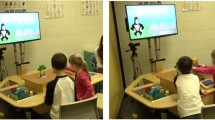Abstract
We have developed an approach to implementing a system for managing situated knowledge for complex instruments. Our aim is to develop a system that guides a user through the steps for operating complex scientific instruments. A user manual is often inadequate support for a community of users, so direct communication with an expert is often required. One reason for this is that not all of the author’s expert knowledge was included in the manual, thus limiting the contents to explicit knowledge. This is a main concern of modern knowledge management practitioners who are attempting to design systems that consider both explicit and tacit knowledge. The key is to distribute explicit knowledge through interaction with the real world so that users can develop tacit knowledge as well as acquire explicit knowledge. We describe technical difficulties related to referencing the real world, which is required for interaction, and describe a novel approach to building a low-cost three-dimensional pointer for obtaining the required knowledge, which constitutes our preliminary result.






Similar content being viewed by others
References
Collins HM, Kusch M (1999) The shape of actions: what machines and humans can do. MIT Press, Cambridge. ISBN 978-0262032575
Conklin EJ (1996) Designing organizational memory: preserving intellectual assets in a knowledge economy. http://cognexus.org/dom.pdf
DeMenthon D, Davis LS (1995) Model-based object pose in 25 lines of code. Int J Comput Vis 15:123–141
Fischler MA, Bolles RC (1981) Random sample consensus: a paradigm for model fitting with applications to image analysis and automated cartography. Commun ACM 24(6):381–395 (ISSN 0001-0782)
Fischer G, Ostwald J (2001) Knowledge management: problems, promises, realities, and challenges. In: IEEE Intell Syst 16(1):60–72
Goose S, Guven S, Zhang X, Sudarsky S, Navab N (2004) Paris: fusing vision-based location tracking with standards-based 3D visualization and speech interaction on a PDA. In: International conference on distributed multimedia systems, San Francisco, pp 75–80
Gourlay S (2002) Tacit knowledge, tacit knowing, or behaving? In: The 3rd European organizational knowledge, learning, and capabilities, Athens
Hedesstrom T, Whitley EA (2000) What is meant by tacit knowledge? Towards a better understanding of the shape of actions. In: The 8th European conference on information systems (ECIS), Vienna
Hildreth P, Kimble C (2002) The duality of knowledge. Inf Res 8(1):
Kim S-S, Nam S-W, Kim D-H, Lee I-H (2007) Hardware-accelerated ray-triangle intersection testing for high-performance collision detection. J WSCG 15 (ISSN 1213-6972)
Kubota H, Nishida T, Koda T (2000) Exchanging tacit community knowledge by talking-virtualized-egos. In: The fourth international conference on autonomous agents (AGENTS). ACM Press, New York, pp 285–292 (ISBN 1-58113-230-1)
Lee PY, Moore JB (2004) Pose estimation via gauss-Newton-on-manifold. In: The sixth international symposium on mathematical theory of networks and systems. Pacific Grove, pp 131–135
Lu CP, Hager GD, Mjolsness E (2000) Fast and globally convergent pose estimation from video images. IEEE Trans Pattern Anal Mach Intell 22(6):610–622 (ISSN 0162-8828)
Merckel L, Nishida T (2007) Solution of the perspective-three-point problem. In: The 20th international conference on industrial and engineering applications of artificial intelligence and expert systems (IEA/AIE), vol LNAI 4570. Springer-Verlag, Kyoto, pp 324–333
Miller G, Talmor D, Teng S, Walkington N, Wang H (1996) Control volume meshes using sphere packing: generation, refinement and coarsening. In: The fifth international meshing roundtable, Pittsburgh, pp 47–61
Moller T, Trumbore B (1997) Fast, minimum storage ray-triangle intersection. JGT 2(1):21–28
Nishida T, Terada K, Tajima T, Hatakeyama M, Ogasawara Y, Sumi Y, Xu Y, Mohammad YFO, Tarasenko K, Ohya T, Hiramatsu T (2006) Toward robots as embodied knowledge media. IEICE Trans Inf Syst E89-D(6):1768-1780 (ISSN 0916-8532)
Nonaka I, Takeuchi H (1995) The knowledge-creating company: how Japanese companies create the dynamics of innovation. Oxford University Press, Oxford. ISBN 0195092694
Polanyi M (1967) The tacit dimension. Peter Smith Publisher Inc., Gloucester
Riess P, Stricker D (2006) AR on-demand: a practicable solution for augmented reality on low-end handheld devices. In: AR/VR Workshop of the Germany Computer Science Society, Coblence, Germany, Sept 2006
Shewchuk JR (1998) Tetrahedral mesh generation by delaunay refinement. In: Symposium on computational geometry, Minneapolis, pp 86–95
Si H (2006a) On refinement of constrained delaunay tetrahedralizations. In: The 15th international meshing roundtable, Birmingham
Si H (2006b) TetGen: a quality tetrahedral mesh generator and three-dimensional delaunay triangulator, user’s manual. http://tetgen.berlios.de, version 1.4 edition
Si H, Gaertner K (2005) Meshing piecewise linear complexes by constrained Delaunay tetrahedralizations. In: The 14th international meshing roundtable, San Diego, pp 147–163
Wagner D, Schmalstieg D (2003) First steps towards handheld augmented reality, vol 00. IEEE Computer Society, Los Alamitos, p 127
Wenger E (1998) Communities of practice: learning as a social system. Syst Thinker 9(5)
Zhang Z (2000) A flexible new technique for camera calibration. IEEE Trans Pattern Anal Mach Intell 22(11):1330–1334
Author information
Authors and Affiliations
Corresponding author
Rights and permissions
About this article
Cite this article
Merckel, L., Nishida, T. Enabling situated knowledge management for complex instruments by real-time reconstruction of surface coordinate system on a mobile device. AI & Soc 24, 85–95 (2009). https://doi.org/10.1007/s00146-009-0200-y
Received:
Accepted:
Published:
Issue Date:
DOI: https://doi.org/10.1007/s00146-009-0200-y




